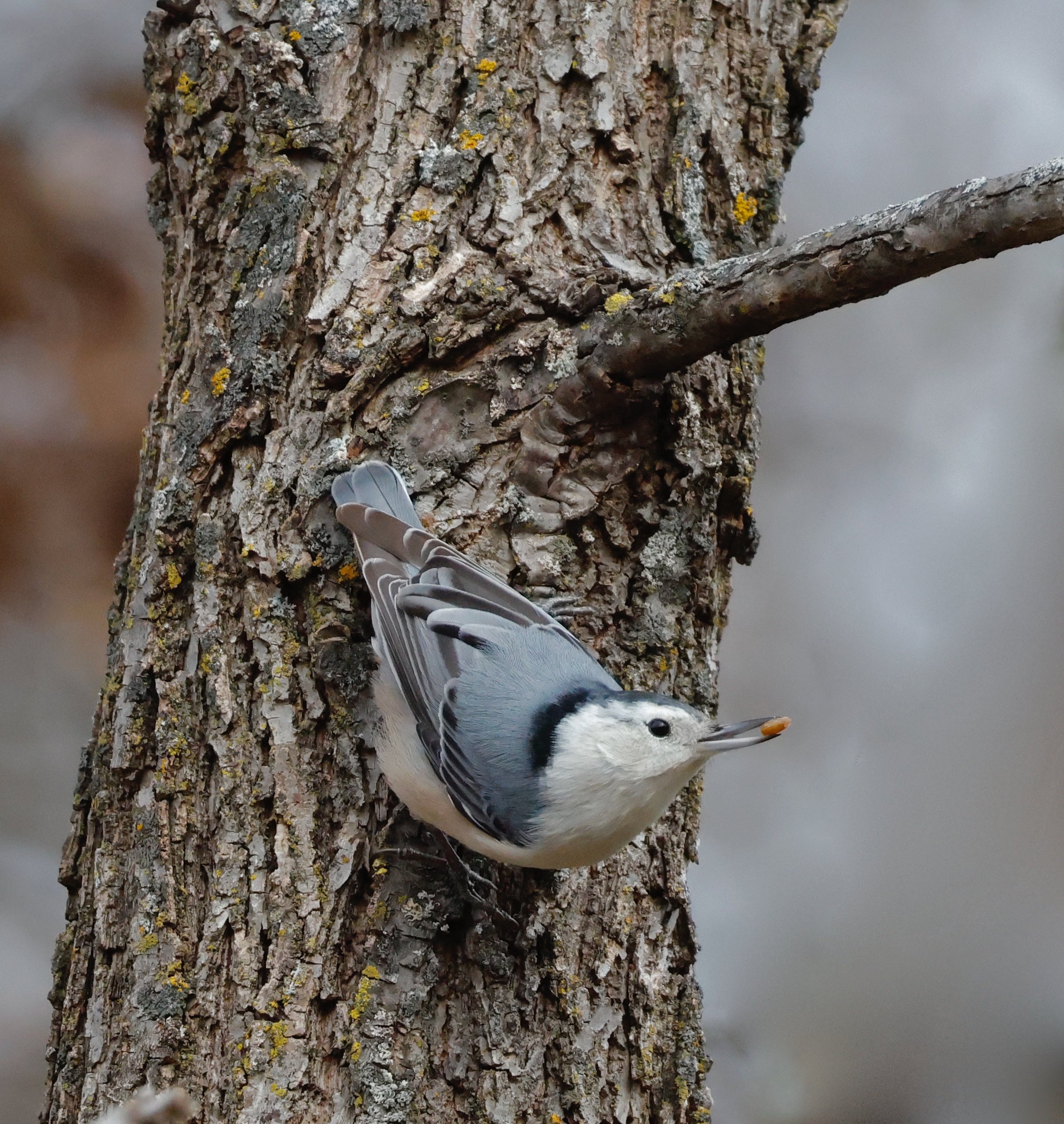A White-breasted Nuthatch looking very round and optimistic (photo by Arlene Koziol).
Most folks who have joined me to search for wildlife know that there are specific circumstances where I can’t help but think aloud. Some of these include: “there are SO MANY!”, “he’s so optimistic!”, and of course, “look at how round it is!” Although I’d consider a number of species to be more spherical than White-breasted Nuthatches (Horned Larks, kinglets, and many warblers), few have such an optimistic stance. To me, these birds appear ready for anything as they zigzag up and down trees, even when they hang completely upside down on a branch.
White-breasted Nuthatches prefer large deciduous trees; their close cousin, the Red-breasted Nuthatch, is found mostly in conifers like pine, hemlock, and spruce. Both species forage a wide variety of arthropods—such as caterpillars, beetles, stink bugs, treehoppers, and spiders—but they’ll also eat seed and nuts. They both have nasally calls, though the Red-breasted Nuthatch is higher-pitched and sounds a bit like a tiny horn.
Nuthatch with food (photo by Arlene Koziol).
Because White-breasted Nuthatches are found on oaks, maples, and other common green-space trees, they’re a highly accessible bird. Folks are likely to see these confident creatures as they spiral down a tree or call just out of sight in settings ranging from rural woodlots to urban areas. I’ve even seen them while attending Concert on the Square in the heart of Madison. They are also fairly easy to attract to bird feeders with suet and black oil sunflower seed if mature trees are nearby.
Goose Pond Sanctuary is nearly all open prairie, but White-breasted Nuthatches can still be seen in the small oak savanna and on the western part of the sanctuary (Benade tract) where deciduous trees are more abundant. A far more reliable Southern Wisconsin Bird Alliance property to view them in Columbia County is Otsego Marsh*. American Tree Sparrows and Rough-legged Hawks can be seen at Otsego Marsh in winter, while Scarlet Tanagers, Great-crested Flycatchers, and Red-headed Woodpeckers are common in summer.
Fortunately, the cheerful little White-breasted Nuthatches are present and abundant at the property all year long.
*Note: Otsego Marsh is closed to public access from November 23 through December 15 and December 24 through January 1 for the gun deer season.
Written by Graham Steinhauer, Goose Pond Sanctuary land steward
Cover image by Kelly Colgan Azar. A White-breasted Nuthatch clings to the side of a tree trunk and looks optimistically upward.







